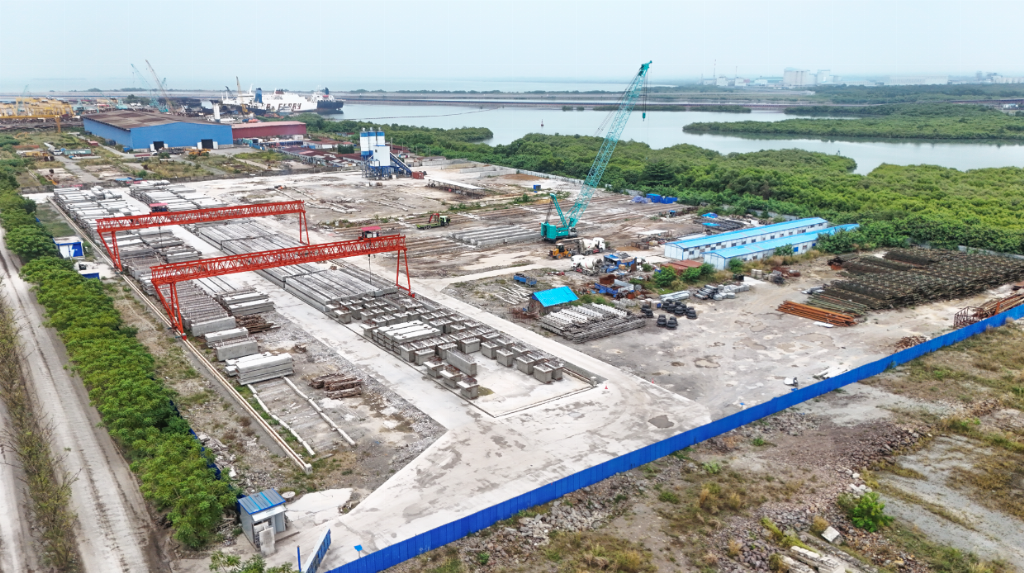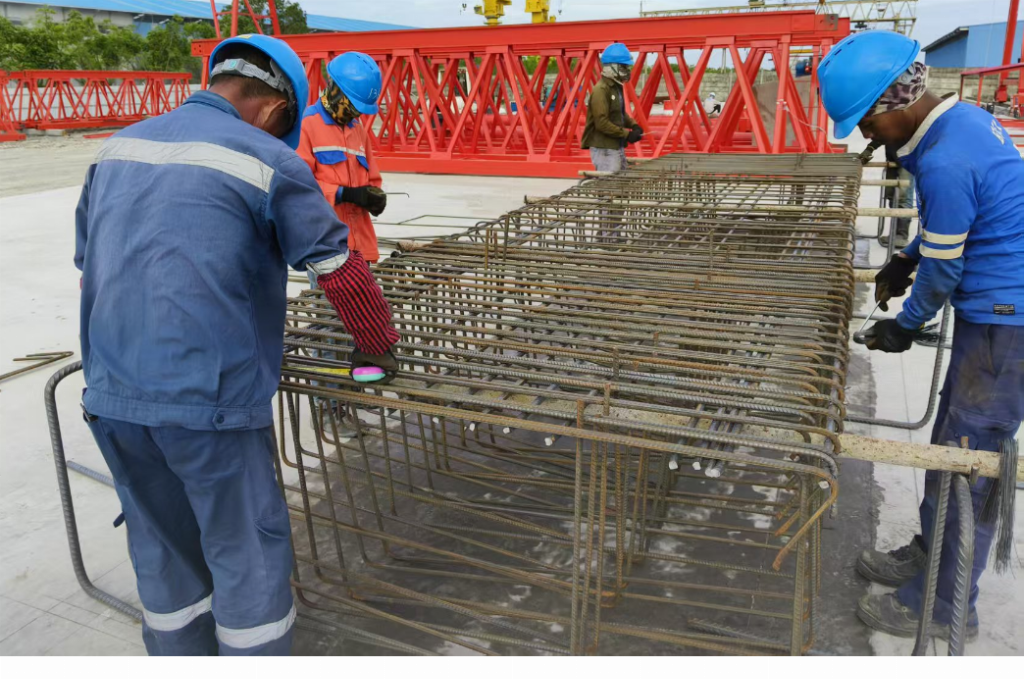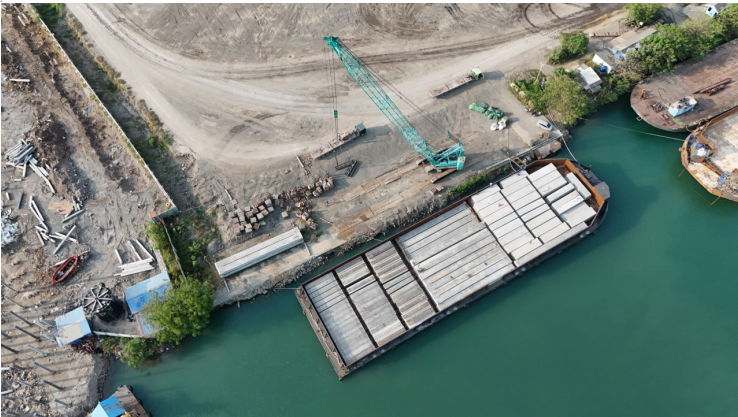
Since the start of the prefabrication task, the project department has attached great importance to it, made meticulous arrangements, and always ad to the work principle of "high standards and strict requirements".
The work has been carried out in strict accordance with the construction organization plan. In all aspects of raw material supply, preparation, reinforcement processing, concrete pouring, curing and demoulding, the standardization process has been fully implemented, which has effectively guaranteed the quality of components and production efficiency In order to deal with the challenges of tight prefabrication period and large amount of repetitive labor, the project department has actively implemented the company's strategy of using labor, and implemented the mixed mode of "Chinese technical team Indonesian labor".
All construction teams have widely recruited local workers, and the number of Indonesian workers has reached about 60 people at the peak, which not only effectively alleviated the tight labor situation, but also significantly reduced the labor cost. It has promoted the integrated development of Chinese and Indian and solved the employment problem of local workers.
At the beginning of the project construction, the Indonesian project employed reinforcement workers with scattered sources and uneven skill levels. Most of the had no systematic binding experience, slow efficiency, unfamiliar operation, prone to errors, missing ties, loose binding wire, resulting in low binding output, affecting the overall construction rhythm and.

In view of this situation, the Chinese management team quickly organized a "field teaching improvement action", arranged experienced Chinese reinforcement workers and translators form a teaching group, and adopted a teaching method of "hand in hand, face to face, step by step" to guide the class.
First, standardize the binding sample, bind a standard sample reinforcement, explain the key links such as binding process, buckle position, binding force and line positioning, and then lead Indonesian workers to operate by sections check the movements one by one, and correct the binding errors and non-standard movements in time.
At the same time, the "group competition quantitative piecework additional reward" is adopted, and the project department selects outstanding Indonesian workers every month, and distributes daily necessities such as shower gel and toothpaste as rewards, which greatly improves the enthusiasm Indonesian workers and allows the workers to continuously improve their skills in the competition.
After systematic training and on-the-job assistance, the proficiency of Indonesian reinforcement workers has been improved. From the initial slow speed and high error rate of binding, they gradually achieved the ability to independently construct by drawing, and the binding quality was stable and the speed was steadily.
The daily output of reinforcement binding has been increased from less than 12 tons to more than 16 tons, and the efficiency has increased by more than 30. The increase in the output of slab binding has effectively accelerated the progress of beam and slab prefabrication construction, reduced labor costs, and at the same time enhanced the team of local employees, laying a solid foundation for the subsequent comprehensive acceleration of construction.

The prefabrication and curing of 1,814 precast components have been completed. After testing, all of them are qualified and are transported to the construction site in an orderly manner.
The early completion of this prefabrication task fully demonstrates the good spirit of the project team's "w to take on responsibilities, overcome difficulties, and work together", which lays a solid foundation for the smooth progress of subsequent construction and provides a strong guarantee for the timely realization the overall node goals of the project. (Peng Bo, Chen Jiping, Ye Jiale)
